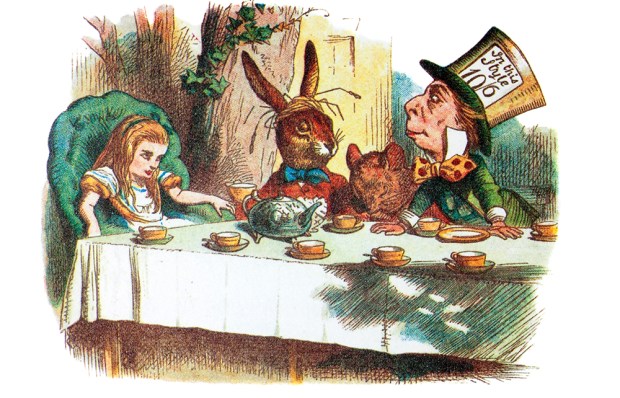Dear old Ian Hislop was pottering around North Petherton, Somerset, on television, to talk about the Alfred Jewel, found nearby (where the king burnt the cakes) in 1693 by a labourer digging for peat. Since then, learned men have made foolish pronouncements on the jewel — as in a game of charades when the guesser says ‘pot’ and ‘a toe’, but can’t get potato.
The ninth-century Alfred Jewel, a favourite exhibit in the Ashmolean, is a tear-shaped piece of rock crystal, two and half inches long, covering an enamel figure holding two scepters. Round the edge, gold letters spell out: Aelfred mec heht gewyrcan — ‘Alfred had me made’.
Alfred the Great had actually mentioned the thing as an aestel, or astel as we’d spell it now. In his introduction to Gregory the Great’s Pastoral Care, which he’d translated with such labour, the king said he was sending a copy to every bishop in the kingdom, together with an ‘aestel’ worth 50 mancuses. A mancus might have been a month’s wages.
Bosworth and Toller’s Anglo-Saxon Dictionary of 1898 (still in use when Hislop and I cycled over to lectures in Oxford, perilously close to Parson’s Pleasure) gave aestel as ‘wax tablet’, perhaps enclosed in a gold cover. The Additions and Corrections to the Supplement of 1921 said firmly: substitute the meanings ‘notice-board’ and ‘board used in the binding of a book, on which the title was inscribed’.
This madness persisted in the Enlarged Addenda of 1972, which guessed ‘bookmark or binding’ and ‘perhaps notice-board’. This was despite a pre-Conquest vocabulary having translated aestel as indicatorium — not ‘notice-board’ but ‘indicator or pointer’. The Alfred Jewel has a socket with a rivet still in place which once held a wooden, horn or ivory rod, a quarter of an inch thick. Yet even now some people call the thing a bookmark.
An aestel pointed out words being read, lest the finger wear away ink from the parchment (not itself vulnerable to finger grease). An inventory in Canterbury from 1315 listed ‘iv baculi de cornu’, of a similar function. Aestel derived from late Latin hastella, ‘shaft’. Now people use astel as if we’d always known.
Got something to add? Join the discussion and comment below.
Get 10 issues for just $10
Subscribe to The Spectator Australia today for the next 10 magazine issues, plus full online access, for just $10.
You might disagree with half of it, but you’ll enjoy reading all of it. Try your first month for free, then just $2 a week for the remainder of your first year.














Comments
Don't miss out
Join the conversation with other Spectator Australia readers. Subscribe to leave a comment.
SUBSCRIBEAlready a subscriber? Log in